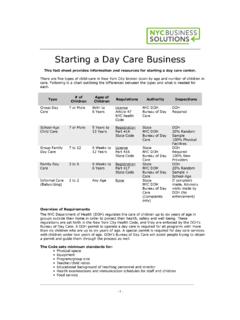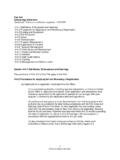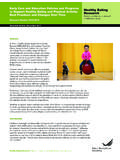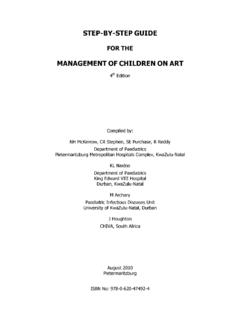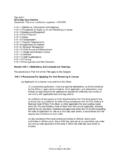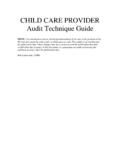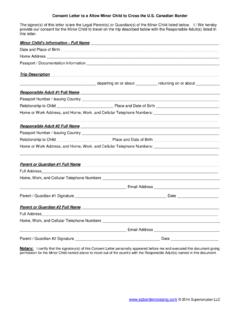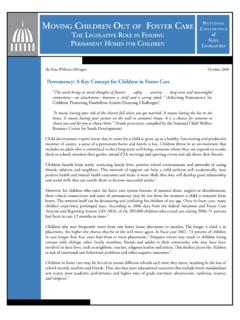Transcription of Geriatric Assessment, Planning, and Care Monitoring
1 PART. 2. Geriatric assessment , planning , and care Monitoring Monkey Business Images/Shutterstock 33 10/7/15 8:47 PM. 34 10/7/15 8:47 PM. C HAPTE R. 3. Psychosocial assessment in care Management Stephanie Swerdlow, Carmen L. Morano, and Barbara Morano Introduction measurable information about the cognitive, social, psychological, spiritual, financial, and The psychosocial assessment along with the legal dimensions of the client system as well functional assessment (discussed in Chapter 4) as important subjective information about provides the foundation for all the care manage- the entire client system's coping mechanisms ment that follows. Combined, the functional and relationships.
2 There is no one model and the psychosocial assessments are not only or approach to completing a psychosocial critical to developing a relevant and appropriate assessment or even a unified consensus on what care plan but in fact provide an in-depth per- specific dimensions (cognitive, psychological, spective of the older adult's quality of financial, social, etc.) make up a comprehensive A good assessment is not an end in itself. The psychosocial assessment . The care manager assessment process provides the care manager must develop a psychosocial assessment that an opportunity to begin to engage on a human best meets the needs of the clients served, and level with the client and the family and is a first one that helps to inform, guide, or contribute step in establishing the relationship that will be to making professional judgments about an instrumental in helping the older adult and the appropriate care family to navigate the aging process.
3 In Appendix 3A at the end of this chapter, The goals of clinicians and researchers we include a sample psychosocial assessment alike have moved from focusing on how designed and specially used by care managers long a particular intervention can extend an for you to adapt or use. This c hapter primar- older adult's life to a more holistic approach ily focuses on the cognitive, psychological, that recognizes the importance of increas- economic, and social dimensions as well as on ing the quality of the older adult's (See assessing the potential for substance abuse Chapter 10 for a more complete discussion and elder maltreatment. S piritual assessment on quality of life.) Within the fields of social is covered in Chapter 8.
4 In Appendix 3B we work and care management there has also include standardized assessment instruments been a shift from a focus on assessing client that are available online. deficits (impairment or disease) to a broader Underlying good care management is good perspective that focuses on the strengths of assessment . 3 Although the p sychosocial clients and their family systems. aspects of an assessment can be labeled the The knowledge gained from a c omprehensive heart and soul of the comprehensive Geriatric psychosocial assessment provides objective, assessment , it is important that they represent 35. 35 10/7/15 8:47 PM. 36 CHAPTER 3 Psychosocial assessment in care Management dimensions of the assessment that can be begin to understand who the client is within a understood only within the c ontext of all o ther larger f amilial context and how to appropriate- dimensions of a comprehensive assessment .
5 Ly manage potential resistance from the initial The care manager takes a historical perspec- engagement, through the assessment , and ulti- tive that encompasses the individual, f amilial, mately during the intervention. and systemic perspectives. This u nderstanding This chapter delineates the essential e lements of the client's behavior, strengths, coping of the psychosocial assessment . A c omprehensive mechanisms, motivations, and the nature of psychosocial assessment is time consuming relationships provides the foundation of the and involves inquiring about sensitive and care plan. Once the assessment is completed, personal information that, for some families the care manager can engage the client more and cultures, can be intrusive.
6 Therefore, it is successfully as well as engage the entire client not uncommon for the care manager to defer system in a collaborative working relationship. certain a reas for subsequent visits when the care The psychosocial assessment begins when a manager has established a relationship with call is made to inquire about care management the client and family members and can better services for an older adult. Frequently, this call gauge their comfort with some of the questions is precipitated by an unexpected trauma or that will ultimately have to be asked. Because crisis ( , hospitalization, sudden behavioral every care manager must initially assess for . change, accident).
7 Consequently, most prac- safety and risk factors in the client's day-to-day tice models start with a family assessment living situation, it is imperative that the cog- on the phone or in person to obtain reliable nitive, psychological, and support systems are information about the family system and to assessed at the time of the first visit. understand the problem more fully from the Demographic information about the c lient family perspective. During this initial call, the gathered during the initial family meeting is care manager inquires about the reason for required to complete an assessment . A lthough the call at this particular time, rather than at a standardized tool does not exist, the follow- some previous time, and the rationale for this ing information about the older adult must be call by this particular family member, rather obtained: than other family members or even the older Birth date and place adult.
8 The information obtained during this Nationality/history of immigration initial call or visit is valuable for developing an Religion: affiliation/importance approach for the initial engagement of the old- Siblings: alive/deceased/relationships/. er adult as well as other family members who health may be involved with the older adult. Childhood care management is unique in that there Education are frequently multiple clients, most n otably Military history spouses or life partners, adult children or step Marital history/significant others children, and their spouses, nieces, nephews, Offspring: birth order/relationship to and grandchildren. Any member of the en- parent(s) and each other/current living tire client system most frequently the older arrangement/availability adult can be resistant to engaging a care man- Occupation ager let alone agreeing to an intervention.
9 This Hobbies/interests resistance can be a function of a general denial Legal and financial status of the problem, anger at family interference, Retirement fear of the unknown, inability to cope with the In addition, the care manager gathers infor- situation, or loss of control of one's self, fam- mation about each family member and can use ily, or situation. By initiating the assessment it to c onstruct a genogram (also called a family process with the family, the care manager can map) or an eco-map, which depicts connections 36 10/7/15 8:47 PM. Introduction 37. etween family members (see Figure 3-1 and b Paternal Maternal Figure 3-2). We suggest using a genogram or grandparents grandparents eco-map to illustrate graphically who is part of the family system and each person's relationship Deceased (good, strained, distant, etc.)
10 To the identified cli- ent. A dditional information about the age and health status of each person can be included in the genogram. This enhances the basic geno- gram by providing a richer description of each of Aunt Father Mother the members included. More About Genograms and Eco-Maps Brother You Your Ex-husband A genogram, or family map, shows all the living in-law sister and deceased people who genetically, emotional- ly, and legally comprise a family. It may span three Nephew Your daughter or more generations of relatives and several states, provinces, and continents, and it shows how each Figure 3-1 Genogram person fits in the group (how they are related). Lynn 80 35 83 65.










